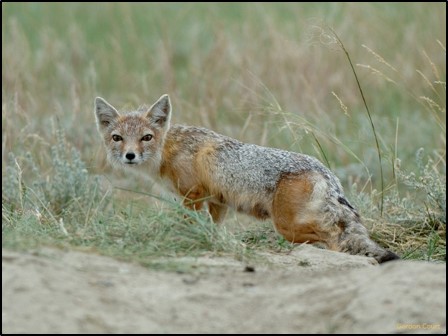Habitat Management Initiative
Habitat management Background
The Alberta Environmental Farm Plan (EFP) has completed and launched its new Habitat Management Chapter, which includes the use of the Habitat & Biodiversity Assessment Tool (HBAT). This initiative was funded by the Government of Canada’s Species at Risk on Agricultural Land (SARPAL) program. To find out more about the update to the workbook, click here.
The Habitat Management Chapter considers biodiversity management through the lens of species at risk (SAR). Because of its multitude of landscapes and the wealth of natural features that define them, Alberta has an amazing diversity of wild species. Most still thrive because of the protected areas that have been set aside or because of the environmental stewardship of agricultural producers and land managers.
However, many of those species are rare, are sensitive to human disturbance or natural events, and may be at risk of disappearing from the province. About 75% of SAR in Alberta are found in the Grassland and Parkland regions. A major threat to SAR in Alberta is habitat loss. Many SAR habitats in Alberta are found on agricultural land. The new Habitat & Biodiversity Assessment Tool can help producers enhance and maintain these habitats through careful planning of farm management and stewardship practices in a way that makes sense for their operation. The goal is for Alberta producers to know which potential species at risk they may have on their land and how to make simple changes that will conserve them and their habitats.
Why is it important to know about this?
- Contributes to sustainable sourcing
- Benefits for producers
- Benefits to the environment and society
Conservation practices that support species at risk, critical habitat and biodiversity offer many benefits to producers. Some of the many benefits of protecting on-farm habitat are:
- Supports agricultural sustainability
- Helps you with pest control (natural predators mean fewer chemicals)
- Improved water quality and quantity, and erosion control
- Nutrient-rich forage for livestock
- Makes you eligible for special programs and incentives
- Keeps you competitive: prepared to meet market demands for sustainable sourcing
- Gives you pride of place in our prairie heritage
- Maintaining and enhancing Alberta’s biodiversity,
- Building healthy and resilient ecosystems on agricultural land,
- Improved water quality and availability,
- Reduced pests and weeds,
- Higher forage production,
- Carbon storage,
- Increased resiliency to environmental stressors (such as drought, floods, and disease), and
- Positive public perception.
There are about 70 species at risk in Alberta (birds, mammals, fish, amphibians and reptiles, plants and insects – their status varies from Special Concern and Sensitive to At Risk and Endangered. The images below show six endangered species.
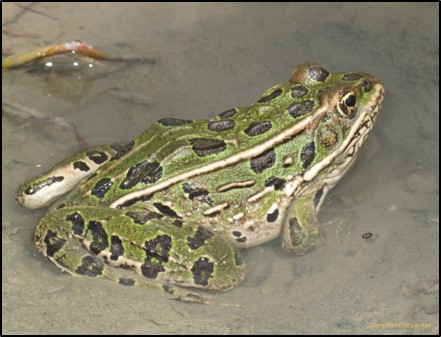 Northern Leopard Frog |
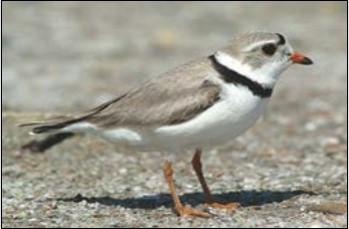 Piping Plover |
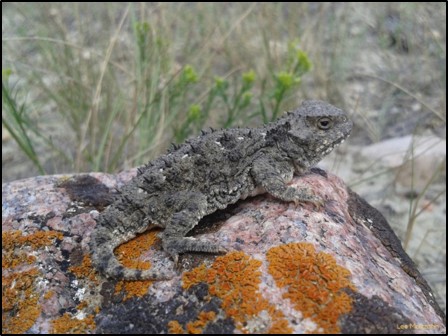 Short-Horned Lizard |
|
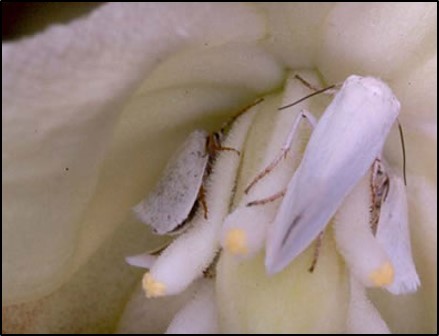 Yucca Moth and Soapweed plant |
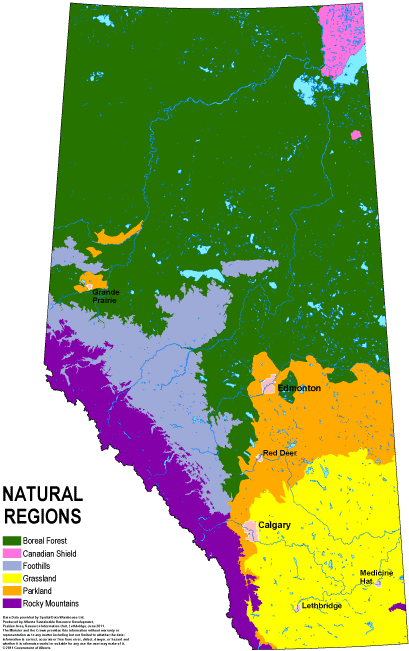
Seventy-five percent of Alberta’s species at risk are found in the Grassland and Parkland regions and 26% of our grasslands remain in a relatively natural state. Let’s try and keep it that way. If you already have species at risk on your land, you’re already doing something right.
Conserving habitat that supports species at risk is the primary means to ensure their survival.
- Learn about how our partners at the Alberta conservation organization MULTISAR (Multiple Species at Risk) are helping producers identify and conserve species-at-risk on their land.
- Watch our how-to video to learn how to install a hawk pole to encourage predators such as the Ferruginous Hawk to nest on your land, a sustainable way to lower pest populations.
- Learn how to Install a Solar-Powered Off-Site Watering System and watch our how-to video. Keeping herds away from fresh water sources such as creeks, rivers and dugouts benefits the livestock and the land.
- Find out how to plan a Riparian Restoration Planting project and watch our how-to video. Riparian areas are important habitats as they provide food and shelter for fish and diverse species of wildlife.
- Complete an Environmental Farm Plan, including the new Habitat Management Chapter to learn the potential species at risk that are present on your land, and ways you can maintain or enhance their habitat.
Voluntary stewardship refers to the recognition of our collective responsibility to retain the quality and abundance of our land, air, water, and biodiversity. The federal and provincial governments encourage voluntary stewardship for species at risk management and work cooperatively with landowners. The initiative relies on Alberta producers – initially those who farm in the prairie grasslands and then extending to those in other regions. Its goal is to facilitate two-way exchange and best management practices that support conservation while enabling producers to fast-track the completion of an EFP. Alberta EFP and its trained technicians will provide you with information on simple, low-cost ways to conserve SAR habitat on your land.
Some examples:
- Protect existing wetlands from being drained or ploughed
- Maintain a buffer zone of natural vegetation around wetlands
- Limit the use of pesticides, herbicides and fertilizers
- Limit grazing near riparian areas and wetlands in the spring
- Provide rest after grazing or patchy grazing to allow grasslands to recover
- Eliminate alien (non-native plants), e.g. thistle
More best practices can be found in the booklet At Home on the Range.
The Habitat & Biodiversity Assessment Tool (HBAT) is a part of the new Habitat Management Chapter in the Environmental Farm Plan workbook. It allows producers to look at the specific habitat features on their farm, and develop plans to enhance and maintain habitat for a variety of species. The tool has complex species occurrence data and geographical range maps on the background, but is simple to use on the front end. This tool will allow farmers to understand the habitat on their land better, how they can positively contribute to Alberta’s biodiversity and offer another perspective on the value of their land.
It also enables producers to learn the potential species at risk present on their land, practices that can maintain or enhance habitat for those species, and connects producers with organizations that can help them implement their management plans.
The EFP and its Habitat Management Chapter were developed in collaboration with ag industry groups, conservation associations and all levels of government.
For registration and information on completing an EFP, click here. If you have any questions, please contact us.
The Alberta EFP program is administered by the Agricultural Research and Extension Council of Alberta on behalf of the Government of Alberta.
 Initiative
Initiative
